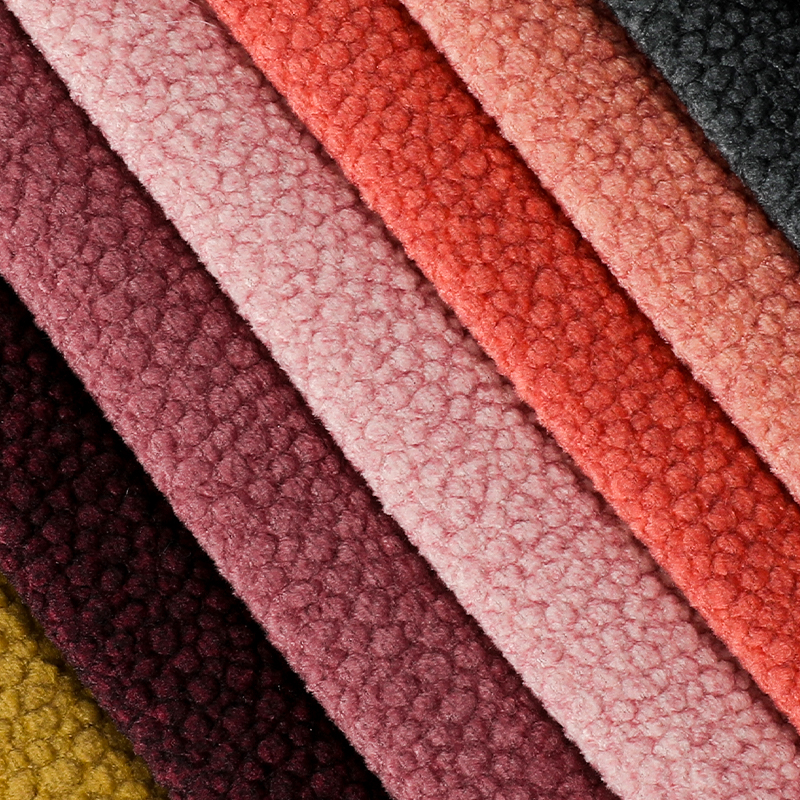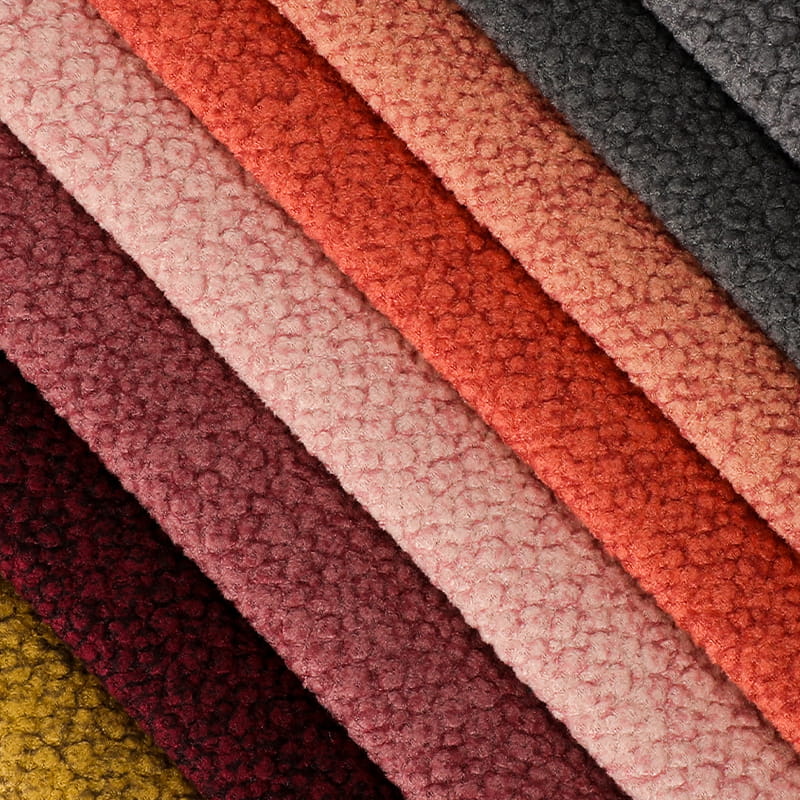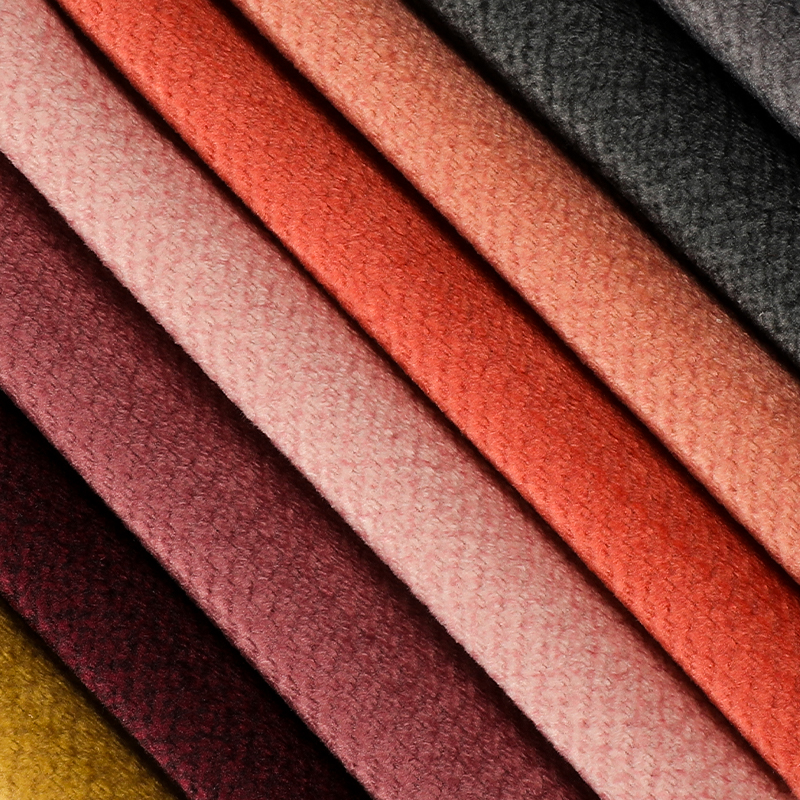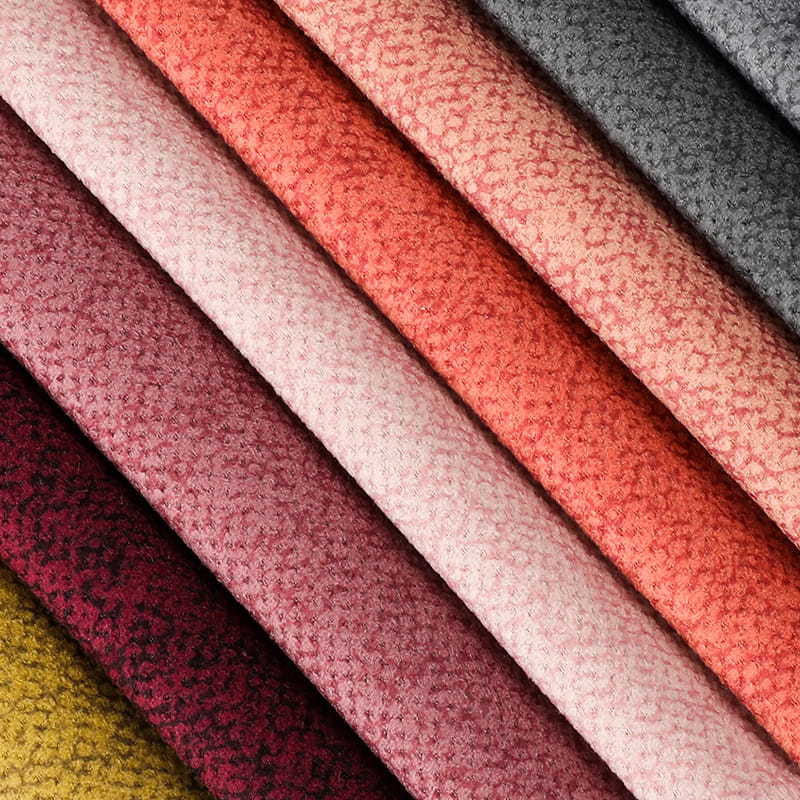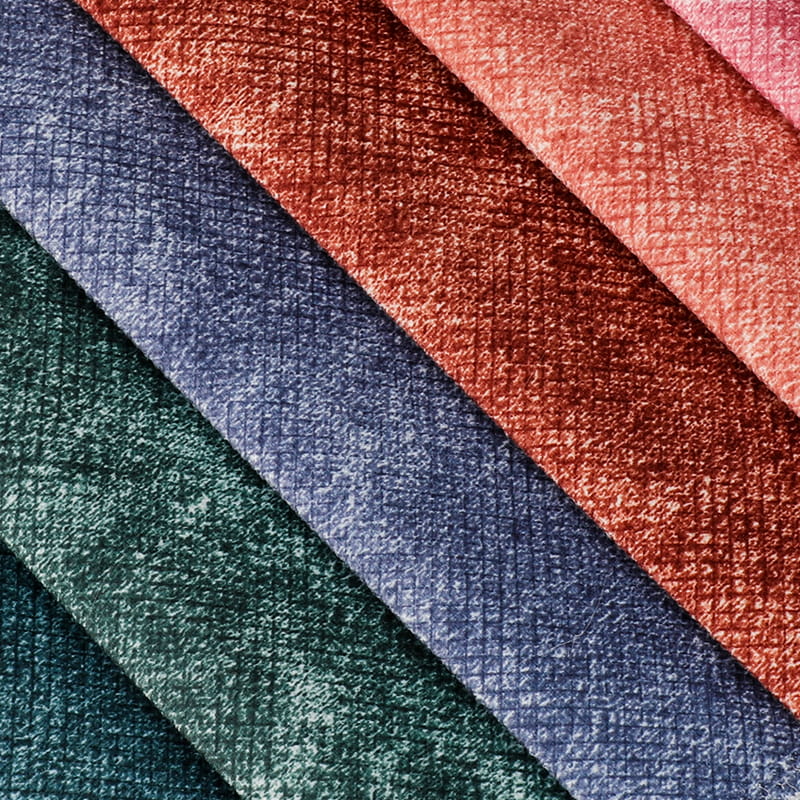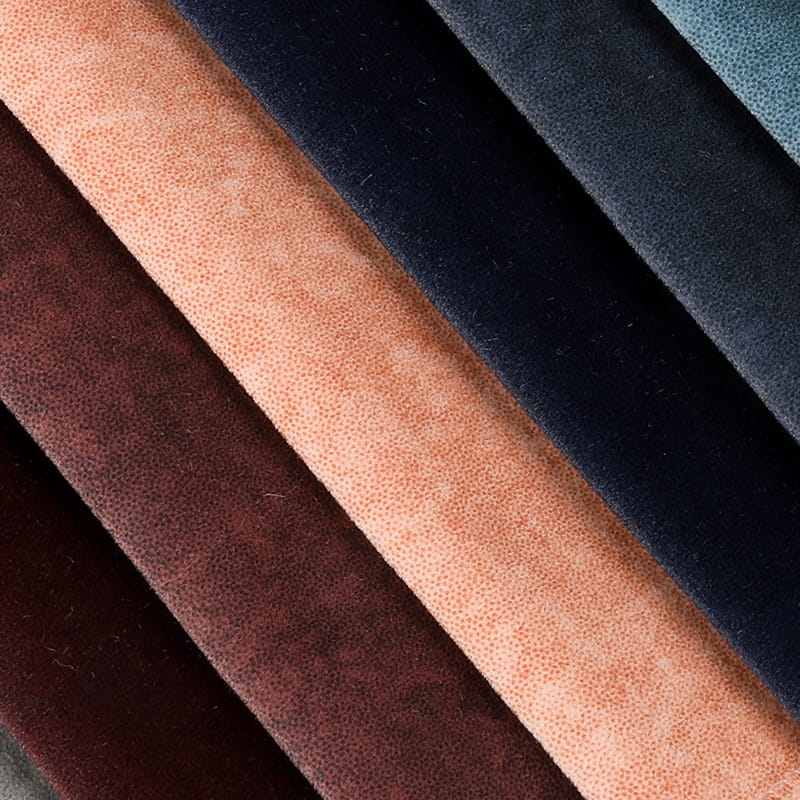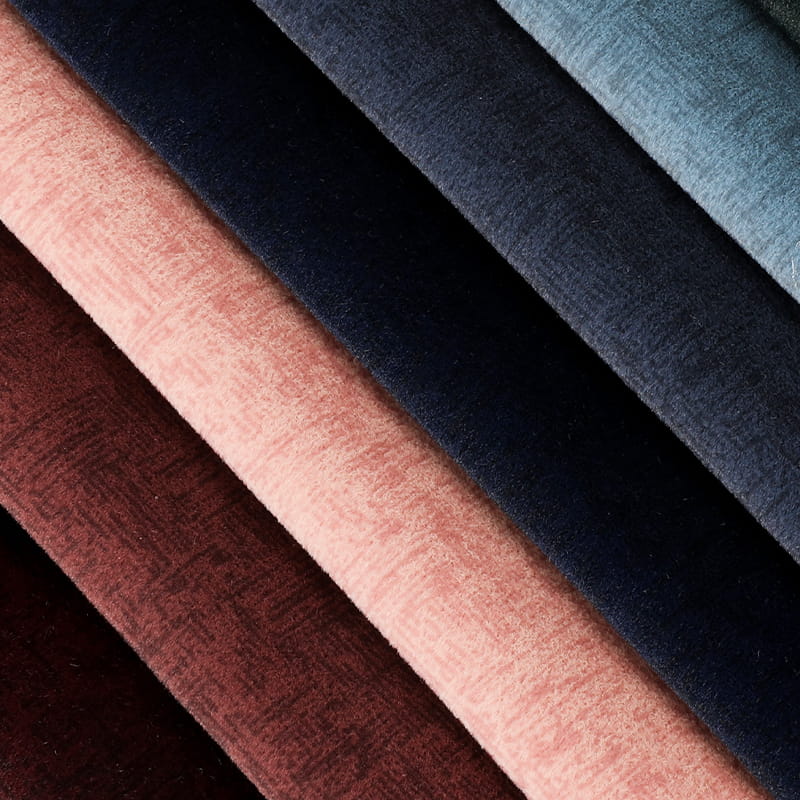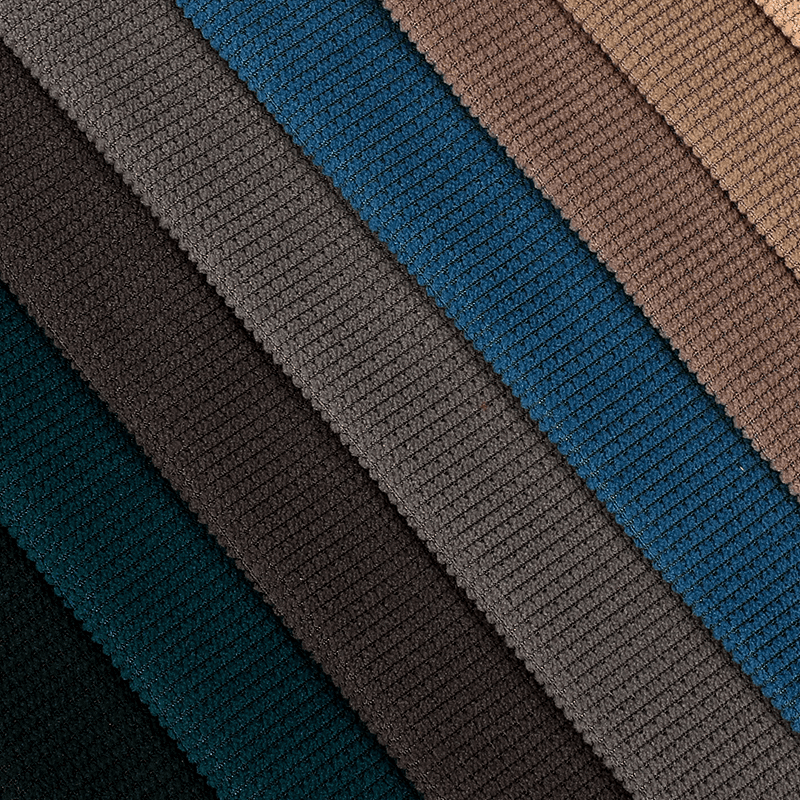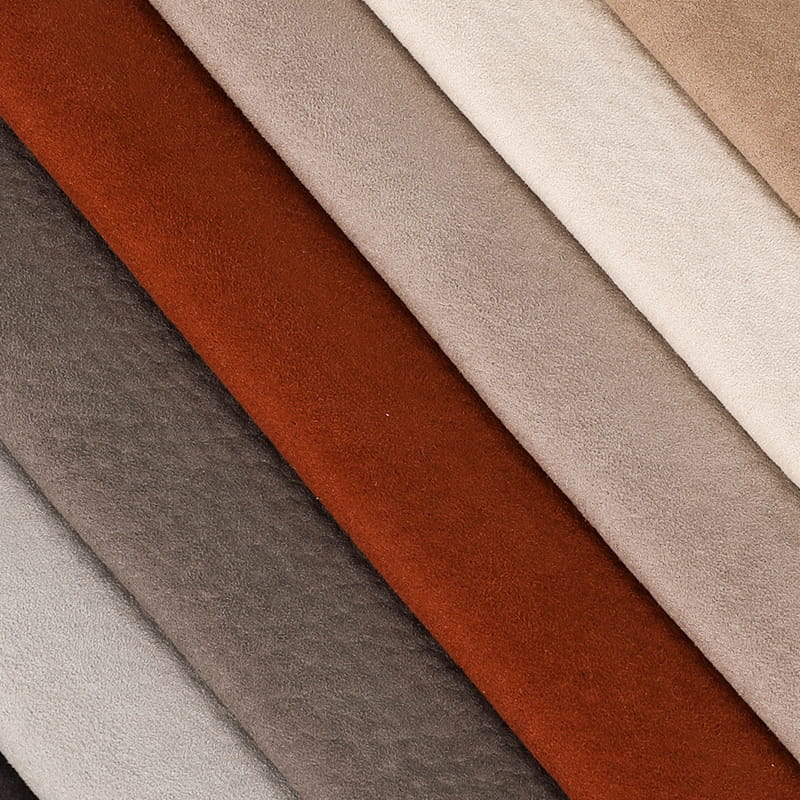In contemporary home design, sofas are the core furniture of the space, and the choice of their fabrics directly determines the tone and texture of the overall style. Printed sofa fabric is becoming the first choice of more and more designers and consumers with its rich pattern expression, diverse material combination and personalized customization advantages.
Material and craftsmanship: the quality foundation of printed sofa fabric
The outstanding performance of printed sofa fabric first stems from its ultimate pursuit of materials and craftsmanship. At present, the mainstream fabric materials on the market mainly include cotton, linen, silk, polyester, nylon and blended fabrics. The characteristics of different materials directly affect the printing effect and user experience.
Cotton fabrics are soft and skin-friendly, with good breathability, suitable for printing warm and delicate patterns, but they are less wear-resistant and need to be matched with anti-fouling treatment; linen fabrics have a rough texture and a natural texture, which complements retro prints or ethnic patterns, and has high strength and wear resistance, making it a balance between durability and aesthetics; silk fabrics have a soft luster and a strong sense of drape, suitable for printing high-end luxurious floral or landscape patterns, which can inject elegance into the space and are more suitable for use as decorative fabrics; synthetic fibers such as polyester and nylon have the advantages of high strength, wrinkle resistance, and easy care. Through the improved imitation cotton and imitation linen technology, they can not only present the texture of natural materials, but also adapt to frequent use scenarios, making them a practical choice for modern homes.

In terms of printing technology, technological innovation is driving the diversified development of printed sofa fabrics. The traditional reactive printing process achieves coloring through the chemical reaction between dyes and fabric fibers. The pattern is full of color, has high color fastness, and is environmentally friendly, suitable for natural fibers such as cotton and linen; digital printing technology, with its high-precision pattern restoration ability, breaks the limitations of traditional printing on pattern complexity and batch size, supports small-batch customization and printing of gradient colors and high-definition patterns, and is especially suitable for personalized design and artistic expression; transfer printing technology performs well on synthetic fibers such as polyester, with rich patterns and bright colors, high production efficiency, and relatively low cost. The choice of different processes needs to be considered comprehensively in combination with fabric material, pattern style and usage scenarios to achieve the best visual effect and durability.
Pattern design: Aesthetic expression from trend to personality
The soul of printing sofa fabric lies in pattern design, which is both a reflection of fashion trends and a carrier of personalized needs. In recent years, the design of printed patterns has shown the characteristics of diversification and cross-border integration, and patterns of different styles can give the space a completely different temperament.
Naturalistic style has always been the classic theme of printed sofa fabrics. Whether it is realistic plants and flowers, lively animal patterns, or abstract natural elements, the printing process can bring the natural atmosphere into the room to create a comfortable and relaxing atmosphere. Among them, low-saturation Morandi color floral patterns are particularly popular. The soft tones and simple lines not only retain the vitality of nature, but also avoid overly bright visual impacts, which are suitable for modern minimalist, Nordic and other style spaces.
Geometric and abstract patterns are the mainstream choice of modern design. From classic stripes, plaids, polka dots to irregular geometric splicing and color block collisions, these patterns convey a sense of rationality and order, or avant-garde and vitality through the combination of lines and colors. For example, large-sized geometric color block prints can stretch the space vision and are suitable for small apartments; while fine grids or folded line patterns can add a sense of hierarchy to the space, which is suitable for modern design styles such as industrial style and minimalist style.

Functional upgrade: pragmatic innovation of printed sofa fabrics
As consumers' requirements for the quality of home life increase, printed sofa fabrics pay more attention to functional upgrades in addition to aesthetics. Anti-fouling, wear-resistant, waterproof, and UV-resistant properties have become the core competitiveness of modern printed sofa fabrics.
For families with children, pets, or high-frequency use scenarios, the anti-fouling performance of fabrics is crucial. By adding nano-coating or using three-proof (waterproof, oil-proof, and anti-fouling) treatment technology on the surface of the fabric, it can effectively prevent liquid penetration and stain adhesion. Daily cleaning only requires a simple wipe, which greatly reduces the difficulty of care. At the same time, fabrics with a high wear resistance index (usually wear resistance ≥ 30,000 turns) can cope with friction loss during long-term use, ensuring that the pattern is not easy to fade and the fabric is not easy to pilling, extending the service life of the sofa.
Matching and application: the spatial magic of printing sofa fabric
The charm of printing sofa fabric is finally revealed through matching with space. The clever use of printed sofa fabrics can easily enhance the design sense and personalized atmosphere of the space, and even change the visual scale and functional positioning of the space.
In small-sized spaces, choosing printed fabrics with light-colored backgrounds and small patterns (such as fine florals and simple lines) can visually expand the sense of space while avoiding the sense of depression caused by overly complex patterns. Matching the walls and floors of the same color can create a light and transparent effect; if you want to increase the sense of layering, you can incorporate elements that echo the sofa pattern into soft furnishings such as pillows and carpets to form a visual linkage.
In terms of style matching, printing sofa fabric is very inclusive. In the new Chinese style, the combination of ink printing and cotton and linen fabrics can convey the elegance and Zen of oriental aesthetics; the Nordic style prefers fresh plant prints and light-colored fabrics, matched with log furniture, to create a natural and comfortable atmosphere; the Bohemian style is good at using a mix of multiple prints, and through the collision of colors and patterns, it creates a passionate and unrestrained exotic style. It is worth noting that the pattern style of the printed sofa fabric needs to be unified with the overall tone of the space, avoiding the disordered stacking of patterns of multiple styles to maintain visual harmony.
The development of printing sofa fabric is not only a technical evolution of materials and craftsmanship, but also a conceptual innovation of home aesthetics. It breaks the monotony and limitations of traditional fabrics, and transforms the sofa from a simple functional furniture to an artistic carrier that carries personality and emotion. Whether you pursue classic elegance or prefer avant-garde trends, printed sofa fabrics can create an exclusive aesthetic space for every family with its rich possibilities. In future home design, with the continuous collision of technology and creativity, printed sofa fabrics will surely unlock more new dimensions of home aesthetics and make living space glow with infinite possibilities.



 English
English Español
Español
